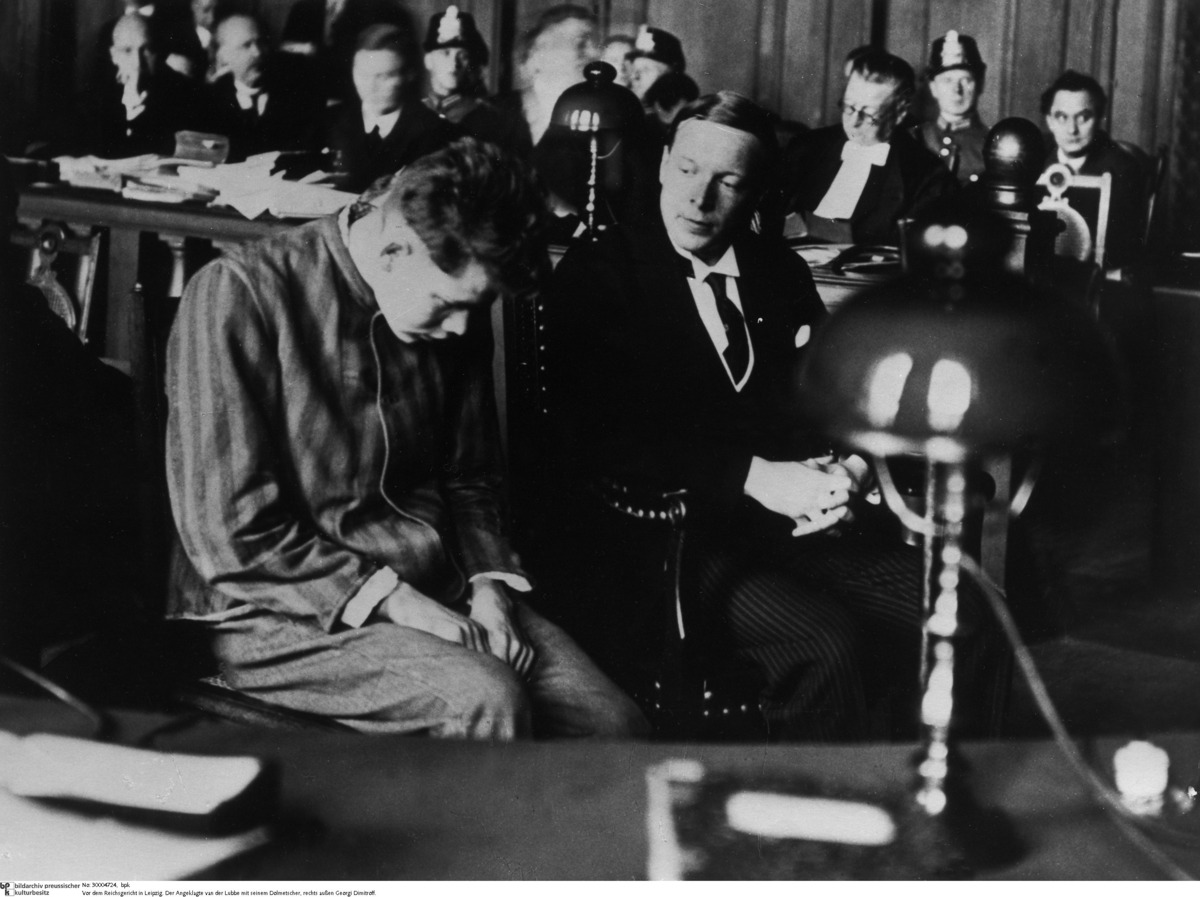Abstract
The Reichstag Fire Trial, which was held from September 21 to
December 23, 1933, was a failure for the Nazi leadership. To ensure the
desired outcome months before the trial even started, Hitler had
persuaded Reich President Hindenburg to pass the “Reich Law Regarding
the Imposition and Execution of Capital Punishment” of March 29, 1933.
According to this law, crimes such as arson and high treason were
punishable by death, retroactive to January 31, 1933. But it could not
be proven that Torgler, Dimitrov, Popov, and Tanev were guilty as
charged, and all four were acquitted. Nonetheless, the Reich Court
emphasized its conviction that the Reichstag fire was indeed part of a
Communist Party plot and signaled its support for the “Reichstag Fire
Decree” of February 28, 1933, which it viewed as justifiable. Torgler
remained in “protective custody” until 1935. The Bulgarian Communists
were deported to the Soviet Union. In 1946, Dimitrov became the second
Bulgarian prime minister. Only Marinus van der Lubbe was convicted of
high treason and arson, condemned to death, and executed.
